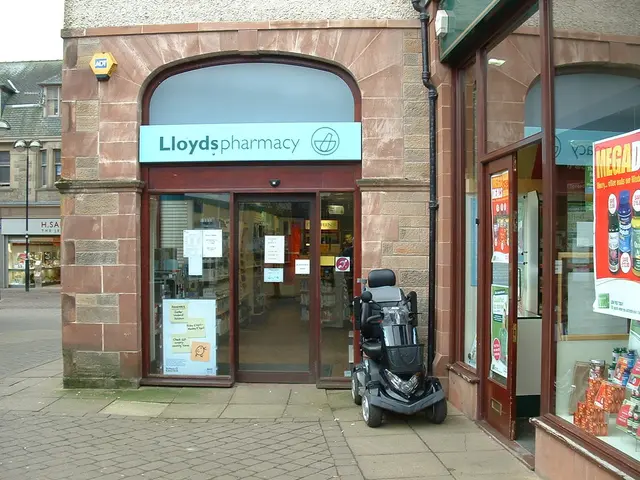Cold Progression: An Overview
**Understanding the Common Cold: Symptoms, Stages, and Differences Among Ages**
The common cold, a pesky viral infection, typically progresses through three stages, each with varying symptoms. Most people recover from a cold within a week to 10 days.
In the early stage (days 1 to 3), initial symptoms include a tickling or sore throat, sneezing, runny or stuffy nose, cough, and hoarseness. These early signs indicate the start of viral infection in the upper respiratory tract.
During the active stage (days 4 to 7), symptoms peak and often worsen. More intense coughing, nasal discharge, headaches, body aches, fatigue, and sometimes fever (especially in children) are common. Nasal mucus can thicken and change color during this phase.
In the late stage (days 8 to 10 and onwards), symptoms gradually subside though residual cough or congestion may persist. The body begins to recover as the immune system overcomes the infection.
Babies, toddlers, and adults experience different symptoms. Babies may have higher fevers, more severe nasal congestion and cough, difficulty feeding, and breathing difficulties. Toddlers often have fever, cough, runny nose, sneezing, fatigue, and trouble sleeping due to nasal congestion and cough. Adults usually have milder symptoms such as a runny or stuffy nose, sneezing, sore throat, cough, fatigue, and occasionally a low-grade fever.
Rest and hydration are critical for recovery, with symptom intensity and duration varying mainly due to immune system maturity and airway size. Aspirin should not be given to children as it can cause Reye's syndrome. Adding menthol drops and covering the head with a towel may help make inhaling steam more effective. Honey should not be given to infants under the age of 1.
For toddlers or older children, symptoms may be similar to those in adults, but they may also experience watery eyes, headache, low-grade fever, chills, extreme tiredness, and a tickly throat. Certain symptoms can last slightly longer, for up to 3 weeks, though they should keep improving within that time. These longer lasting symptoms may include a runny nose, a stuffy nose, and cough.
Parents and caregivers should check a medication to ensure it is suitable for children or infants and follow dosage instructions. If a person experiences any of the following symptoms, it may be a sign of the flu rather than the common cold: fever, chills, chest discomfort, and cough. People at risk of flu complications should see their doctor immediately if they notice any symptoms of the flu.
According to the CDC, at-risk groups for flu complications include pregnant women, adults aged 65 years and over, children under 5 years, and people with chronic health conditions, including asthma, diabetes, and heart disease. Symptoms of a cold usually appear gradually, reach a peak, and then progressively fade away again.
By recognising the stage of the cold, individuals can know how best to treat the symptoms during each stage. People can try drinking plenty of fluids, drinking hot water with honey and lemon, sucking on throat lozenges, taking a cough medicine, using a humidifier, using a saline nasal spray or nasal drops, and inhaling steam from a bowl of water to help relieve cold symptoms. Lozenges should not be given to children under 4 years old. For children under 6 months, only acetaminophen is suitable.
- In babies, symptoms of the common cold may include higher fevers, more severe nasal congestion and cough, difficulty feeding, and breathing difficulties alongside the usual early signs.
- Toddlers might experience symptoms like fever, cough, runny nose, sneezing, fatigue, trouble sleeping, watery eyes, headache, low-grade fever, chills, extreme tiredness, and a tickly throat.
- Adults typically have milder symptoms such as a runny or stuffy nose, sneezing, sore throat, cough, fatigue, and occasionally a low-grade fever.
- The active stage of the common cold usually means symptoms like more intense coughing, nasal discharge, headaches, body aches, fatigue, and sometimes fever (especially in children) are common.
- During the late stage of the common cold, symptoms gradually subside though residual cough or congestion may persist.
- Science and health-and-wellness experts suggest rest and hydration as critical for recovery from a common cold.
- For toddlers or older children, symptoms may last slightly longer, for up to 3 weeks, though they should keep improving within that time.
- If a person experiences fever, chills, chest discomfort, and cough, it may be a sign of the flu rather than the common cold.
- The Centers for Disease Control and Prevention (CDC) states that at-risk groups for flu complications include pregnant women, adults aged 65 years and over, children under 5 years, and people with chronic health conditions, including asthma, diabetes, and heart disease.
- For treating cold symptoms, people can try various methods like drinking plenty of fluids, drinking hot water with honey and lemon, using a humidifier, using a saline nasal spray or nasal drops, inhaling steam, and taking over-the-counter remedies. However, it's essential to consider the age of the individual before administering these treatments.







